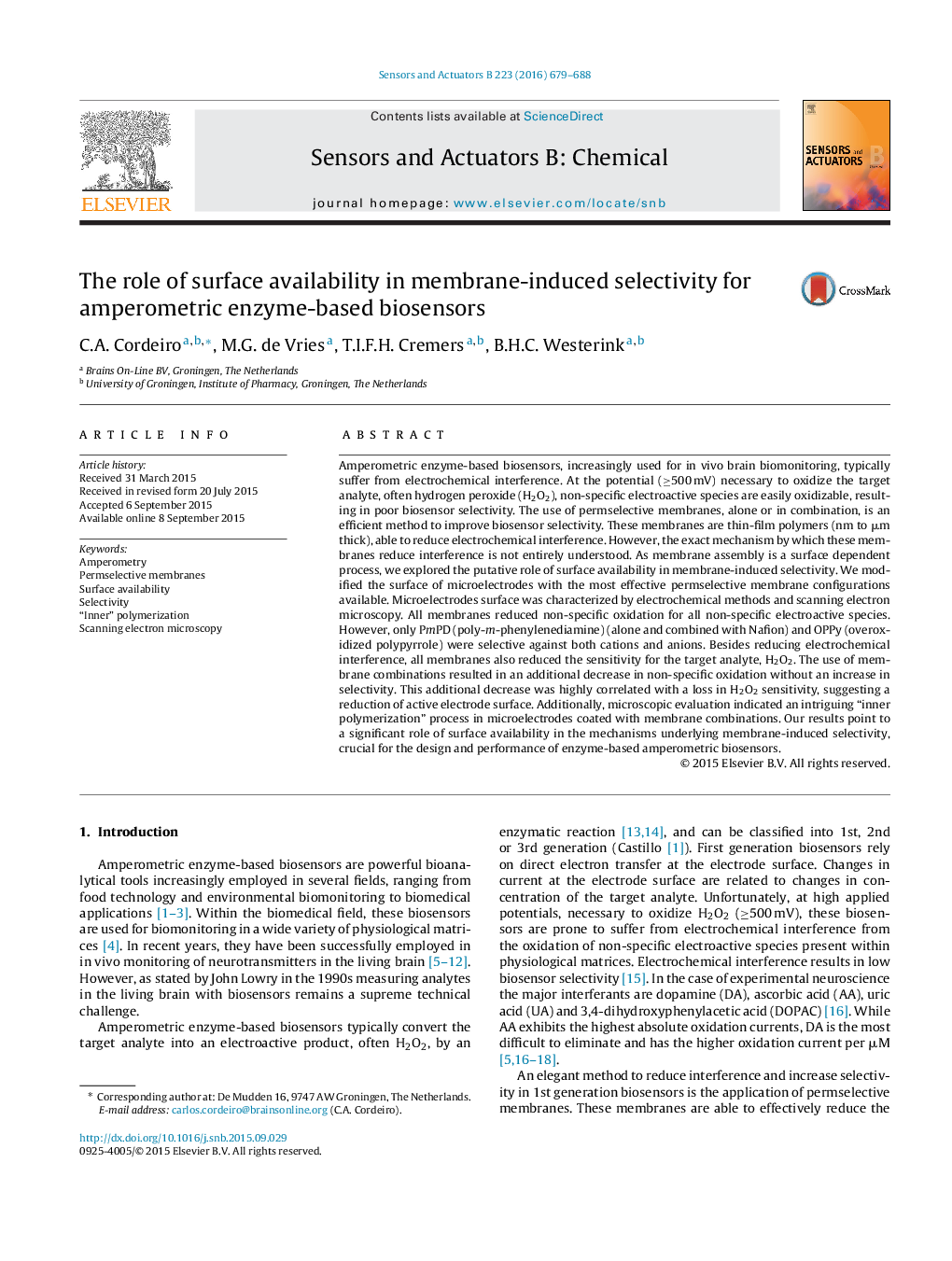| Article ID | Journal | Published Year | Pages | File Type |
|---|---|---|---|---|
| 7145610 | Sensors and Actuators B: Chemical | 2016 | 10 Pages |
Abstract
Amperometric enzyme-based biosensors, increasingly used for in vivo brain biomonitoring, typically suffer from electrochemical interference. At the potential (â¥500 mV) necessary to oxidize the target analyte, often hydrogen peroxide (H2O2), non-specific electroactive species are easily oxidizable, resulting in poor biosensor selectivity. The use of permselective membranes, alone or in combination, is an efficient method to improve biosensor selectivity. These membranes are thin-film polymers (nm to μm thick), able to reduce electrochemical interference. However, the exact mechanism by which these membranes reduce interference is not entirely understood. As membrane assembly is a surface dependent process, we explored the putative role of surface availability in membrane-induced selectivity. We modified the surface of microelectrodes with the most effective permselective membrane configurations available. Microelectrodes surface was characterized by electrochemical methods and scanning electron microscopy. All membranes reduced non-specific oxidation for all non-specific electroactive species. However, only PmPD (poly-m-phenylenediamine) (alone and combined with Nafion) and OPPy (overoxidized polypyrrole) were selective against both cations and anions. Besides reducing electrochemical interference, all membranes also reduced the sensitivity for the target analyte, H2O2. The use of membrane combinations resulted in an additional decrease in non-specific oxidation without an increase in selectivity. This additional decrease was highly correlated with a loss in H2O2 sensitivity, suggesting a reduction of active electrode surface. Additionally, microscopic evaluation indicated an intriguing “inner polymerization” process in microelectrodes coated with membrane combinations. Our results point to a significant role of surface availability in the mechanisms underlying membrane-induced selectivity, crucial for the design and performance of enzyme-based amperometric biosensors.
Related Topics
Physical Sciences and Engineering
Chemistry
Analytical Chemistry
Authors
C.A. Cordeiro, M.G. de Vries, T.I.F.H. Cremers, B.H.C. Westerink,
